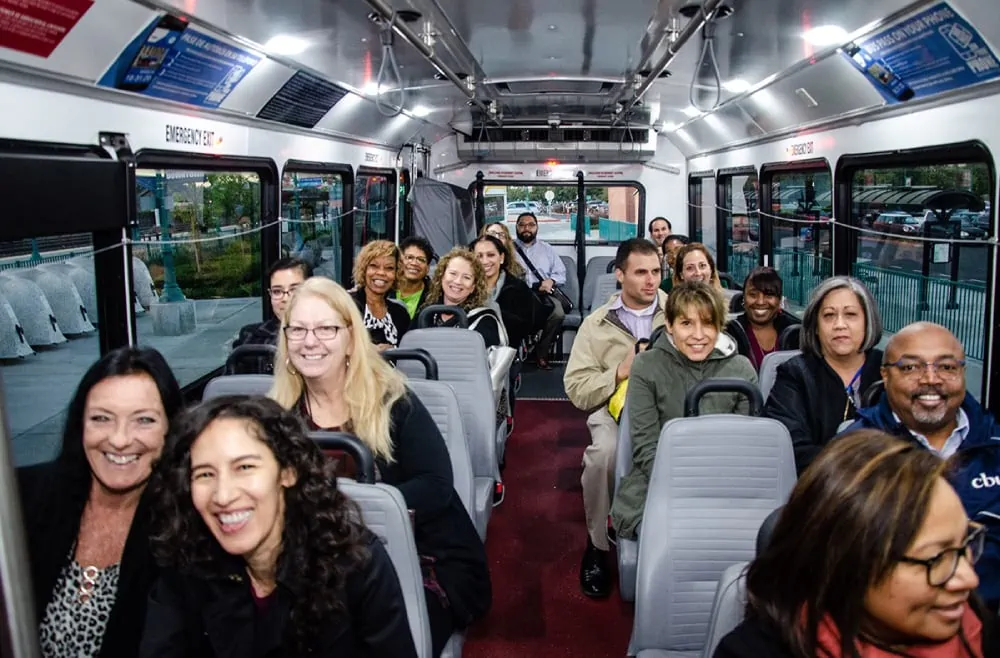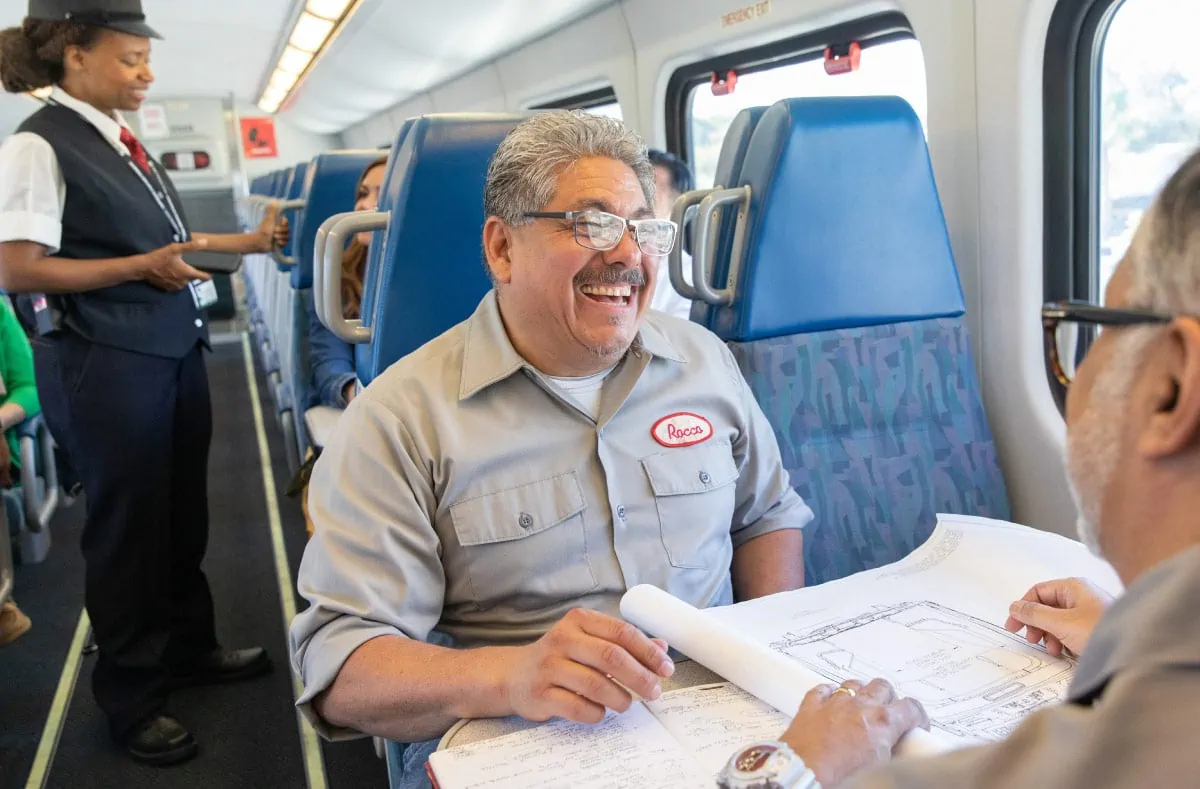The Point: December 7-8 meeting shines light on Inland Empire highway and rail progress
The California Transportation Commission (CTC) returned to Riverside on December 7 and 8, its first visit since the start of the COVID-19 pandemic. The meeting offered an opportunity for CTC members to see the growing Inland Empire in-person and for host agencies RCTC and the San Bernardino County Transportation Authority (SBCTA) to present highway and passenger rail milestones and reiterate the challenges we face as a region.
“RCTC and SBCTA are leading the way by delivering capital projects, passenger rail, and transit services to a diverse and highly mobile population,” said RCTC First Vice Chair and Lake Elsinore City Council member Bob Magee, who opened the meeting and introduced the executive directors of both agencies before airing a jointly produced video.
RCTC had the opportunity to spotlight 5 capital projects delivered in 2022 – the Route 60 Truck Lanes, the 91 Corridor Operations Project, the I-15 Interim Corridor Operations Project, the I-15 Railroad Canyon Road Interchange, and the I-215 Placentia Avenue Interchange. Additionally, RCTC certified its Tier 1 environmental studies for Coachella Valley Rail, a planned 144-mile passenger rail service between Los Angeles and the Coachella Valley. This certification clears a path for in-depth environmental studies to advance this daily intercity rail service to final design and construction.
In San Bernardino County, SBCTA is finishing its I-10 Express Lanes Project and widening of Route 210, constructing new bridges in San Bernardino and Barstow, as well as 15 interchanges throughout the San Bernardino Valley. In October, the agency opened its Arrow service, providing a new passenger rail connection for southern California residents.
RCTC and SBCTA also work together to promote ridesharing through the IE Commuter program, which encourages carpooling, vanpooling, public transit use, bicycling and walking to work.


Even with the progress made in 2022, Inland Empire residents continue to face heavy traffic congestion, the impacts of goods movement, and limited multimodal options, all of which impede access to jobs and detract from our quality of living.
As the 12th most populous metro area in the United States, the Inland Empire ranks in the top five in growth nationwide. This growth is a result of the region’s affordable living combined with the 300,000 new housing units required to meet the state’s housing plan, further underscoring the need for and importance of expanded transportation solutions.
RCTC and SBCTA are working together at local, regional, state, and federal levels to bring new transportation investments to inland southern California and continue to move the needle to deliver more mobility options than ever before.
